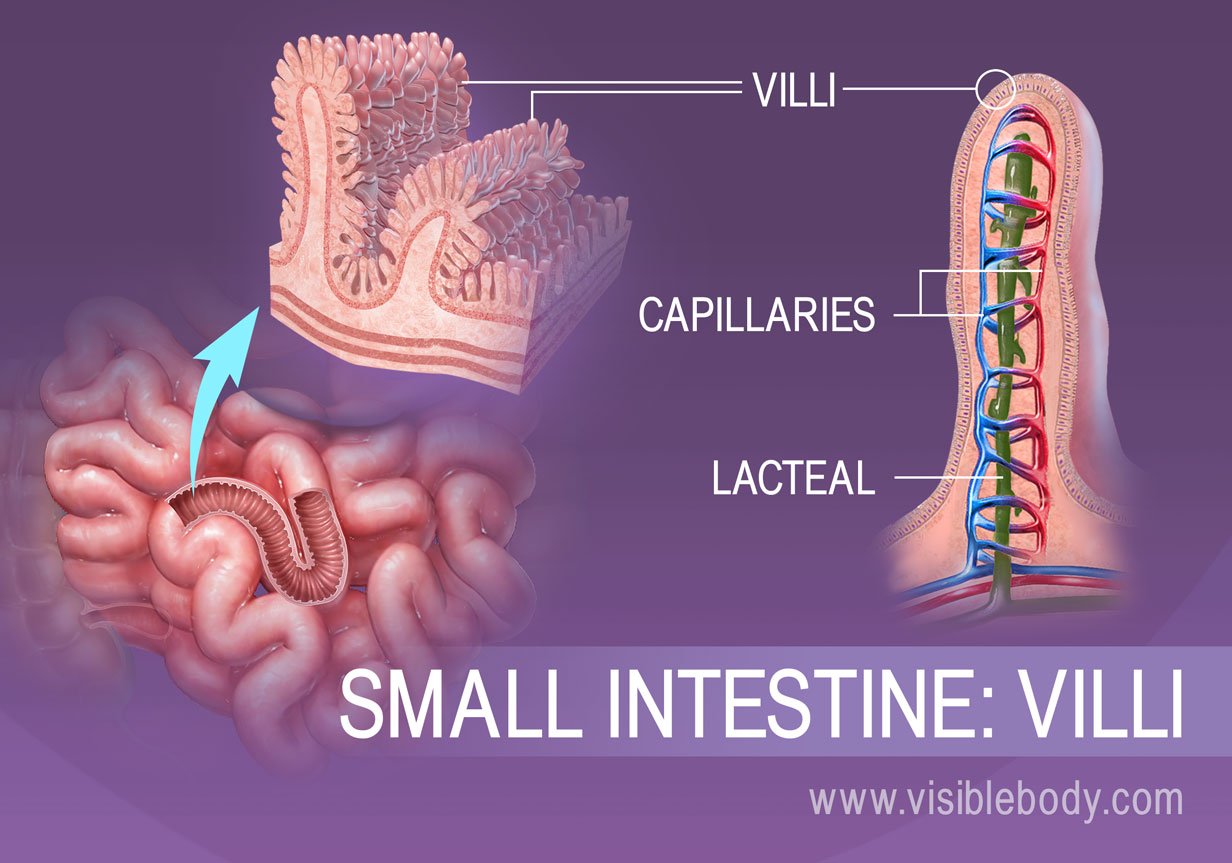Ingested food is chewed, swallowed, and passes through the esophagus into the stomach where it is broken down into a liquid called chyme. Chyme passes from the stomach into the duodenum. There it mixes with bile and pancreatic juices that further break down nutrients. Finger-like projections called villi line the interior wall of the small intestine and absorb most of the nutrients. The remaining chyme and water pass to the large intestine, which completes absorption and eliminates waste.

Villi that line the walls of the small intestine absorb nutrients into capillaries of the circulatory system and lacteals of the lymphatic system. Villi contain capillary beds, as well as lymphatic vessels called lacteals. Fatty acids absorbed from broken-down chyme pass into the lacteals. Other absorbed nutrients enter the bloodstream through the capillary beds and are taken directly to the liver, via the hepatic vein, for processing.

Chyme passes from the small intestine through the ileocecal valve and into the cecum of the large intestine. Any remaining nutrients and some water are absorbed as peristaltic waves move the chyme into the ascending and transverse colons. This dehydration, combined with peristaltic waves, helps compact the chyme. The solid waste formed is called feces. It continues to move through the descending and sigmoid colons. The large intestine temporarily stores the feces prior to elimination.

The body expels waste products from digestion through the rectum and anus. This process, called defecation, involves contraction of rectal muscles, relaxation of the internal anal sphincter, and an initial contraction of the skeletal muscle of the external anal sphincter. The defecation reflex is mostly involuntary, under the command of the autonomic nervous system. But the somatic nervous system also plays a role to control the timing of elimination.
Study: Immune system promotes digestive health from Science Daily.
Visible Body Web Suite provides in-depth coverage of each body system in a guided, visually stunning presentation.
A detailed look at the role of the gut microbiota in nutrition and health in the BMJ (British Medical Journal).
When you select "Subscribe" you will start receiving our email newsletter. Use the links at the bottom of any email to manage the type of emails you receive or to unsubscribe. See our privacy policy for additional details.